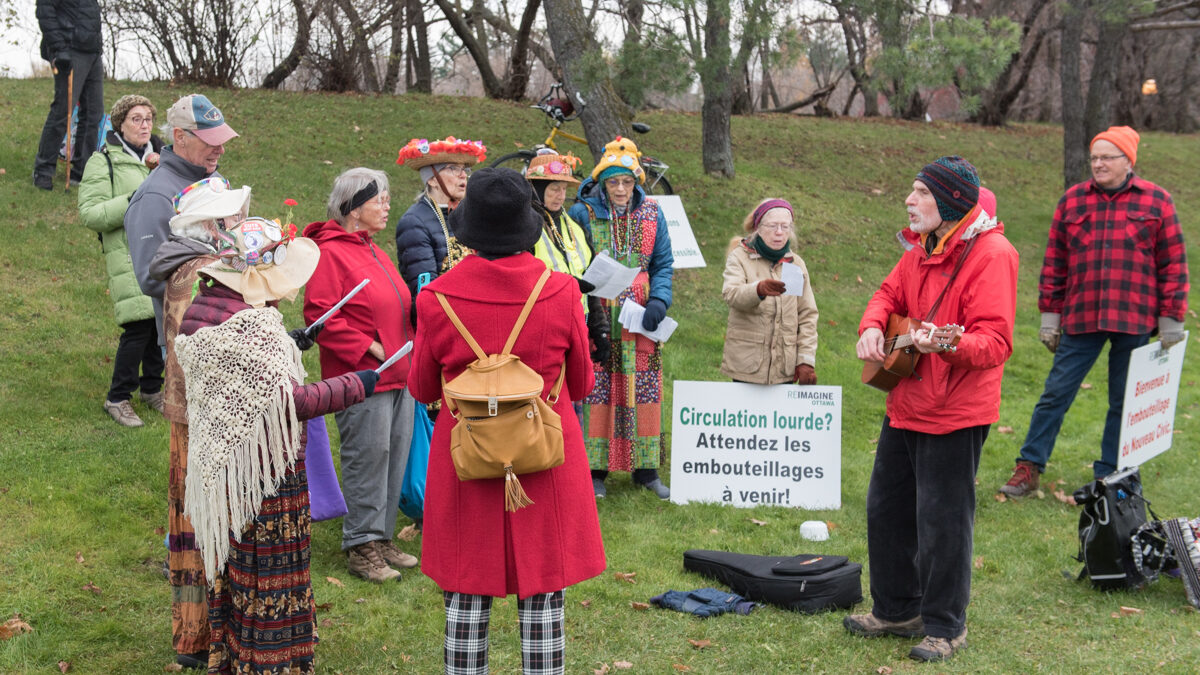Artists, musicians and more recently gathered – on Zoom and for several in-person events in various cities – to speak for the trees.
Tree Songs 2 connected tree-lovers from across Canada on Nov. 21.
Events were held in Nova Scotia, Newfoundland and in Peterborough and Toronto along with Ottawa — with all participants protesting about various tree-related issues in their area.
The central issue in Ottawa, explained co-organizer Chris White of the local rally, is the threatened “deforestation” of 50 acres of the Central Experimental Farm to make room for the new Civic campus of The Ottawa Hospital.
“Fifty acres is 750 trees that will never be replaced,” said White. “They’re considered to be the lungs of Ottawa. They are purifying the air. They are cooling the city. They are regulating climate change. They are preventing flooding with the root system. They are the source of unbelievable potential knowledge that we haven’t even explored yet.”
The Ottawa Hospital concluded more than a decade ago that it had to rebuild the century-old Civic campus. The hospital was in discussion with the federal government until 2015, when 12 potential sites were identified for the National Capital Commission to examine.
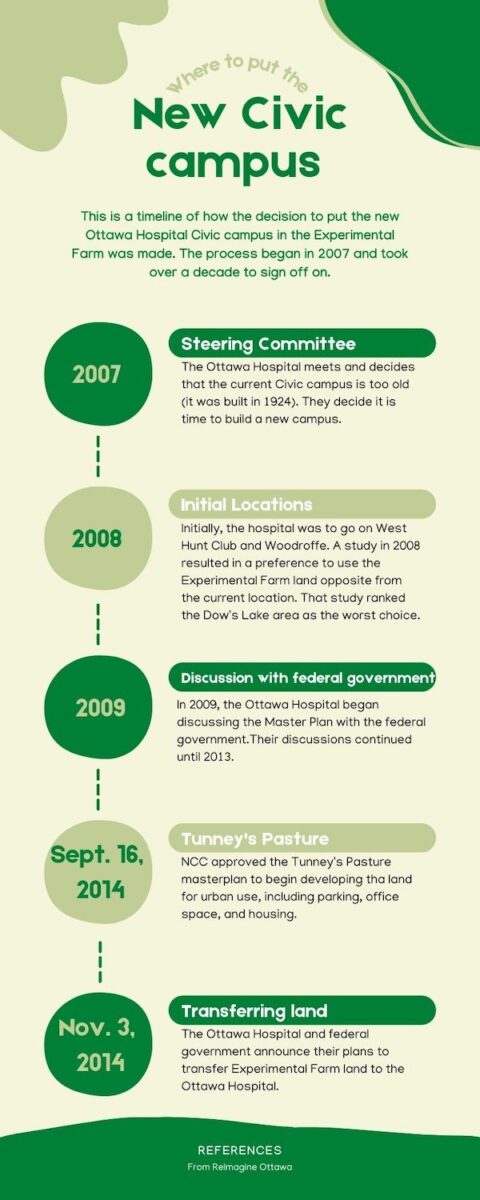
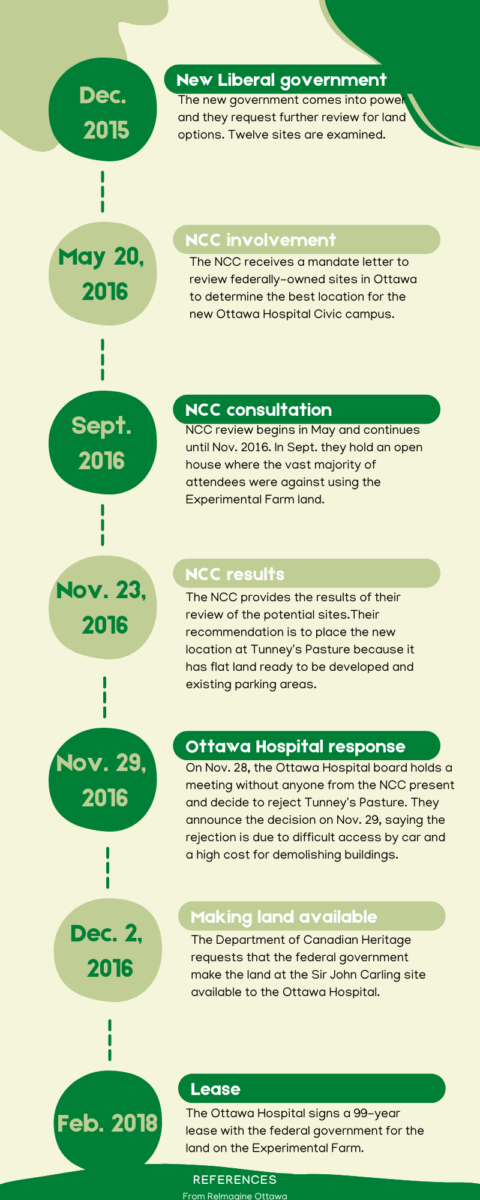
“Six months of consultation, 8,000 submissions, all kinds of research and analysis — and the recommendation was that the hospital was supposed to go to Tunney’s Pasture,” said White, referring to the federal government campus north of the intersection of Scott Street and Holland Avenue, just west of Ottawa’s Mechanicsville neighbourhood.
The NCC’s choice was rejected by the hospital board in 2016 for several reasons, including concerns about accessibility to the Tunney’s Pasture site and the cost of tearing down existing buildings. Instead, the board chose to build at the eastern end of the Experimental Farm, southwest of the intersection of Carling Avenue and Preston Street.
In 2018, the federal government provided the hospital with a 99-year lease for a location near Dow’s Lake. The new location will have a main entrance off Carling and will stretch along Prince of Wales, intersecting with the LRT Trillium line between Bayview and Carleton University.
“This is all just baloney,” White said.
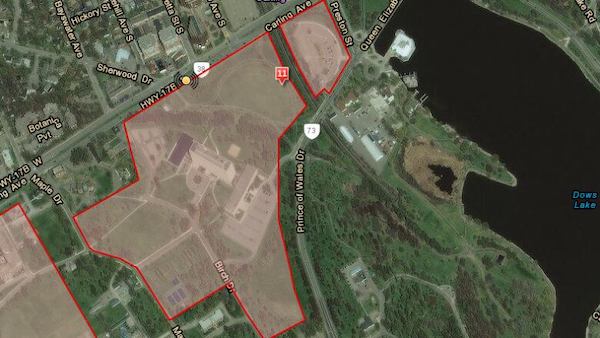
While construction isn’t expected to start until 2024, workers are scheduled to begin building the parking garage this spring. The garage alone will take down 358 trees, according to the hospital’s site plan.
Hospital officials have pledged to plant many more trees than are cut down during construction, but critics have said replacing mature trees with saplings is not acceptable.
The Ottawa Hospital says it “will plant five new trees for every tree that needs to be removed (during construction), in partnership with the Central Experimental Farm, Agriculture and Agri-Foods Canada, and the City of Ottawa.”
“Fifty acres is 750 trees that will never be replaced. They’re considered to be the lungs of Ottawa. They are purifying the air. They are cooling the city. They are regulating climate change. They are preventing flooding with the root system. They are the source of unbelievable potential knowledge that we haven’t even explored yet.
— Chris White, co-organizer, Tree Songs 2 rally in Ottawa
“The only thing that can put a halt to this totally long and bad decision — and undemocratic and harmful decision — . . . is just more people being aware of what’s going on,” said White, hence Tree Songs 2.
The rally used the arts to showcase what trees mean to various people. Adrian Baker, an artist who joined White for a discussion over Zoom during the rally, said she draws a lot of inspiration from the environment.
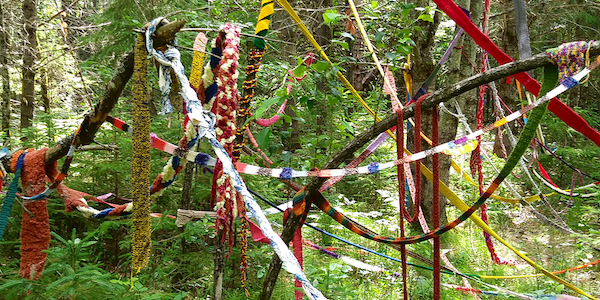
Net-work
This is Adrian Baker’s piece “Net-Work”. She reached out to people all over the world asking them to create these strands made of any kind of fibre they wanted. Her inspiration came from the underground network trees use to communicate: “This project, with us reaching out to each other through the network, like social media, to help each other make this project, is a representation of the underground network of trees. And I see the tree network as a good example for the way humans can interact and support each other.”
“It was a natural step for me to start trying to represent our connection to nature through my art, because it’s really important to preserve and protect our environment,” Baker explained. “It’s a pressing issue which I don’t think we hear enough about from politicians, so I try to initiate dialogue about it through my art.”
For Baker, trees are the “silent, stoic sentinels standing around the forest, and I think we don’t appreciate them. We just use them.” She points out that trees do so much work for us, like keeping us warm, purifying the air and providing materials to build our homes with, while we just tear them down.
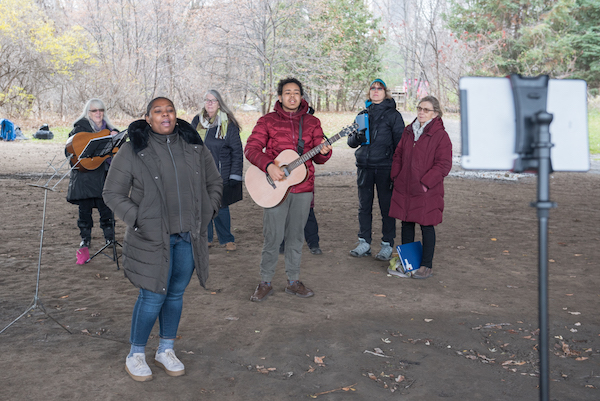
Songwriters and singers were also present, several of them having already attended a smaller Tree Songs rally in October, White explained. He said there was one performer with an eight-year-old daughter who created a painting about saving the trees, which she presented at the November rally.
“And of course, of all the people that we should be concerned about, it’s people like eight-year-olds whose needs are not being considered — whose future is not being considered,” White said.
Baker said she believes that “we’re not separate from trees. We’re all interrelated and interwoven — the whole planet. It’s foolhardy to think we can just eliminate part of that network.”
“All somebody has to do is go stand under one of those giant, magnificent trees for a while, which I bet none of those people (involved in the hospital project) have done that,” White said. “They’ll feel the power and the magnificence and the wonder of what’s above the ground and below the ground, and they just do that even for one of those grand, magnificent, irreplaceable old trees, and then multiply by 750.”

